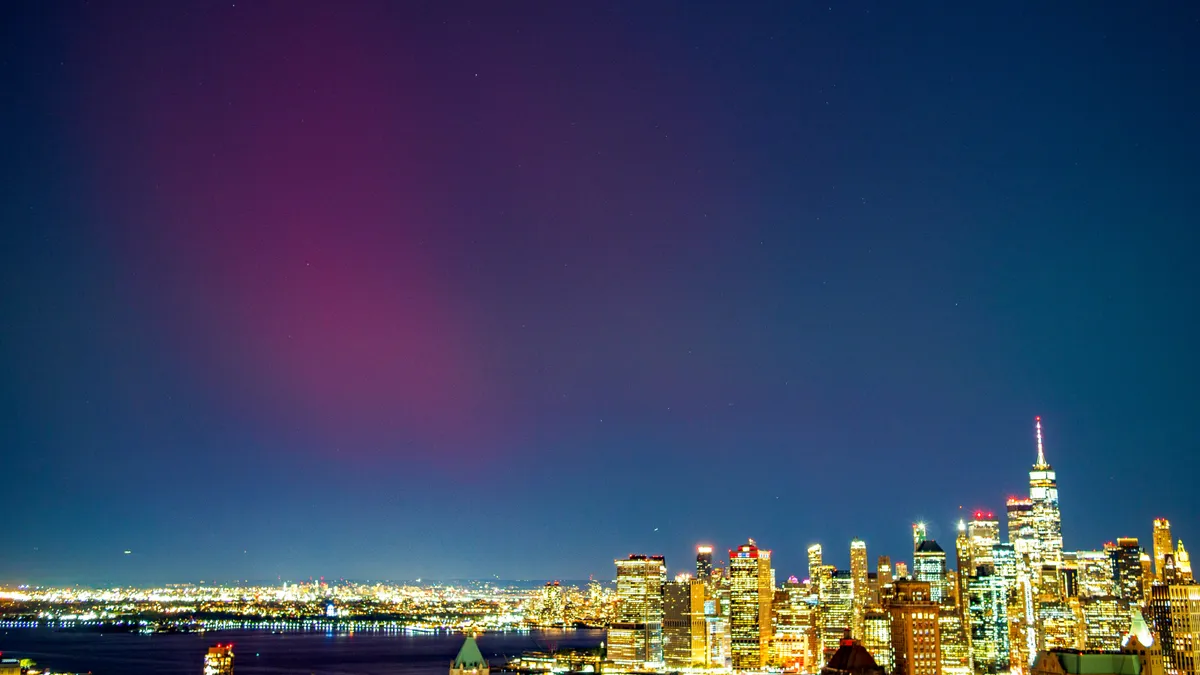
Skywatchers across up to 18 U.S. states are gearing up for a spectacular celestial event as a moderate geomagnetic storm is expected to rock Earth's magnetic field, beginning on Friday, June 13. This stunning display, characterized by shimmering auroras, is anticipated to captivate audiences from coast to coast.
On Wednesday, June 11, the National Oceanic and Atmospheric Administration's (NOAA) Space Weather Prediction Center issued an initial alert for a G2 (moderate) geomagnetic storm projected to commence on Saturday, June 14. However, in a timely update released on Friday, NOAA indicated that the storm might begin even earlier, potentially later the same day. The event is expected to subside by Sunday, June 15, or Monday, June 16.
Experts predict that the storm may escalate to a G3 (strong) level over the weekend, as reported by Spaceweather.com. While some outlets have speculated that the storm could achieve G4 (severe) status, this has likely stemmed from confusion regarding a previous G4 storm event earlier in the month. It's crucial to clarify that the upcoming storm is not anticipated to reach such extreme intensity.
Geomagnetic storms result from disruptions in Earth's magnetic field, often triggered by fluctuations in the solar wind. These disturbances are usually caused by massive clouds of magnetized particles released during solar flares, known as coronal mass ejections (CMEs). In this instance, the disturbance is attributed to a co-rotating interaction region, a phenomenon where fast-moving solar wind streams collide with slower winds ahead of them, originating from a significant coronal hole on the solar surface.
Such disturbances can compress Earth's magnetosphere, leading to dazzling aurora displays at unusually low latitudes. However, geomagnetic storms can also lead to adverse effects, such as temporary radio blackouts, damage to ground-based power infrastructure, and even satellite malfunctions as Earth's atmosphere absorbs excess energy and expands.
The 18 states where the auroras may be visible include: Alaska, Montana, North Dakota, Minnesota, Wisconsin, Michigan, South Dakota, Maine, Vermont, New Hampshire, Idaho, Washington, Oregon, New York, Massachusetts, Connecticut, Rhode Island, and Wyoming. Additionally, there might be sightings in the U.K. and various parts of Europe. However, it's essential to note that visibility can be hindered by local weather conditions, such as cloud cover, haze from wildfires, or light pollution.
Recent years have seen heightened solar activity due to the solar maximum phase, typically the most active period of the sun's roughly 11-year activity cycle. This phase, marked by a complete flip of the sun's magnetic field, began unexpectedly early in 2024 and is likely nearing its conclusion. Nevertheless, experts suggest that elevated solar activity could persist for several more years, impacting geomagnetic conditions on Earth.
As we prepare for this remarkable natural phenomenon, skywatchers are encouraged to stay informed and ready to witness the beauty of the auroras, while also being aware of the potential implications of the ongoing geomagnetic storm.